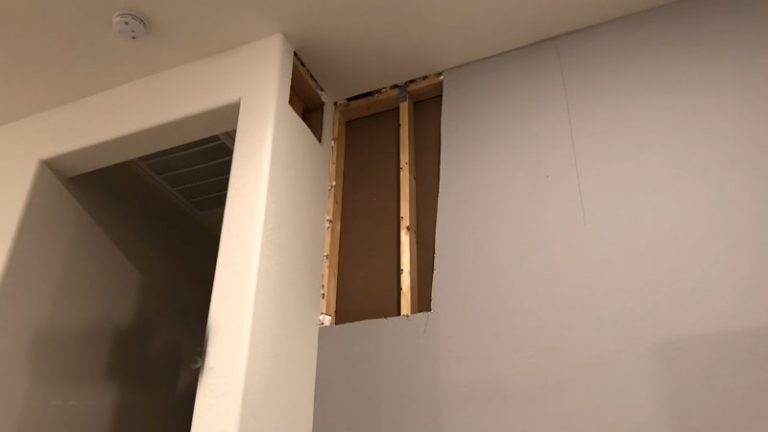Gable Vent Installation From Inside: Your Ultimate Attic Solution
Is your attic trapping unbearable heat, driving up your energy bills and creating a breeding ground for moisture? You’re not alone. Many homeowners face the challenge of an improperly ventilated attic, which can lead to serious issues like mold growth, wood rot, and premature aging of your roof. The problem often lies with inadequate exhaust for hot, moist air to escape.
While installing a gable vent is a well-known solution, the thought of working high up on a ladder can be daunting and dangerous for many. This guide provides a comprehensive, step-by-step approach to installing a gable vent safely from the inside of your attic, eliminating the need for risky exterior work. We’ll cover everything from preparation to the final touches, ensuring you can tackle this project with confidence.
You'll Learn About
Why Proper Attic Ventilation is Non-Negotiable
Before diving into the installation process, it’s crucial to understand why your attic needs to breathe. Proper ventilation creates a continuous flow of air, drawing in cooler, fresh air from soffit vents and expelling hot, humid air through exhaust vents like gable vents. This circulation is vital for several reasons.
In the summer, an unventilated attic can become a super-heated oven, with temperatures soaring well above the outside air. This intense heat radiates down into your living spaces, forcing your air conditioning system to work overtime and driving up your energy costs. Conversely, in the winter, warm, moist air from your home rises into the attic and can condense on cold surfaces, leading to mold, mildew, and rot. A well-ventilated attic helps maintain a more consistent temperature, protecting your home’s structural integrity and your wallet.
Understanding the Role of Gable Vents
Gable vents are installed in the gable ends of a house—the triangular portion of the wall at the peak of the roof. They serve as an effective exhaust point for hot air and moisture. By installing vents on opposite gable ends, you create a cross-ventilation system that significantly improves airflow. While some homes have ridge vents, gable vents are a common and effective alternative, especially for certain roof designs.
When considering your attic’s ventilation, it’s helpful to understand how different elements work together. For instance, the pitch of your roof can influence airflow dynamics. You can learn more about how roof pitch affects your home’s structure by exploring the difference between 10/12 vs 12/12 roof pitch.
Preparing for Your Interior Gable Vent Installation
A successful project starts with thorough preparation. Before you begin cutting into your wall, take the time to gather the necessary tools and materials, and carefully plan your installation. This will ensure a smooth process and a professional-looking result.
Tools and Materials Checklist
Having the right tools on hand is essential for a safe and efficient installation. You don’t want to be scrambling for a tool midway through the job. Here’s a list of what you’ll need:

| Tool/Material | Purpose |
|---|---|
| Gable Vent | The primary component for attic ventilation. |
| Tape Measure | For accurate measurements of the vent and opening. |
| Pencil or Marker | To mark the cutting lines on the interior wall. |
| Drill with Long Bit | To create pilot holes from the inside to the outside. |
| Reciprocating Saw or Jigsaw | For cutting the opening in the wall sheathing. |
| Utility Knife | To score and cut siding from the outside if necessary. |
| Caulking Gun and Exterior-Grade Sealant | To create a weatherproof seal around the vent. |
| Screws or Nails | To secure the vent to the wall framing. |
| Safety Goggles and Dust Mask | To protect yourself from debris and dust. |
Choosing the Right Location
The placement of your gable vent is critical for optimal performance. You’ll want to position it as high as possible on the gable wall, close to the roof’s peak. This is because hot air naturally rises, and placing the vent at the highest point ensures the most effective exhaust.
From inside the attic, identify the center of the gable wall. Be mindful of any obstructions such as framing studs, wiring, or plumbing. You’ll need to cut between the studs, so locate a clear space that accommodates the size of your vent. If you have an existing attic fan, you’ll need to be aware of any potential interference. An improperly installed fan can be a source of noise, a common issue discussed in articles about attic fan vibration.
Step-by-Step Guide to Installing a Gable Vent from Inside
With your tools gathered and location selected, you’re ready to begin the installation. Follow these steps carefully for a secure and weatherproof installation.
Step 1: Mark the Opening from the Inside
Using the gable vent itself or the provided template, trace the outline of the vent onto the interior wall sheathing. Double-check your measurements to ensure the opening will be the correct size. Make sure your outline is level and centered between the wall studs.
Step 2: Drill Pilot Holes
Drill a hole at each corner of your traced outline, making sure the drill bit goes all the way through to the exterior siding. These pilot holes will serve as a guide for cutting the opening from the outside if you have a helper, or for confirming your interior cut is correctly aligned. This is a crucial step to avoid misaligning the vent.
Step 3: Cut the Opening
Using your reciprocating saw or jigsaw, carefully cut along the traced lines on the inside of the attic. Take your time and follow the lines precisely for a clean cut. Be prepared for some dust and debris, and wear your safety goggles and mask.
Step 4: Prepare the Exterior Siding
Once the interior sheathing is cut out, you’ll need to address the exterior siding. In many cases, cutting from the inside will also cut through the siding. However, for a cleaner finish, especially with vinyl siding, it’s best to have someone carefully cut the siding from the outside, using the pilot holes as a guide. If you’re working alone, you can proceed with the interior cut, but be prepared to clean up the edges of the siding from the outside if possible.
Step 5: Test Fit and Frame the Vent
Before permanently installing the vent, do a test fit to ensure it slides into the opening snugly. If the fit is too tight, you may need to trim the edges slightly. For a more secure installation, you can build a simple frame around the interior opening using 2x4s. This provides a solid surface to mount the vent to.
Step 6: Install and Seal the Gable Vent
Apply a generous bead of exterior-grade sealant around the flange of the gable vent. From the inside, push the vent into the opening until the flange is flush against the exterior siding. A proper seal is essential to prevent water and air leaks. Secure the vent to the framing with screws or nails from the inside.
Step 7: Finishing Touches
From the outside, apply another bead of caulk around the perimeter of the vent where it meets the siding. This creates a final, weatherproof barrier. If your vent came with a decorative trim piece, snap it into place. Ensure that your attic insulation is not blocking the new vent, as this would defeat its purpose. Proper insulation is key, but you should be aware of the potential pitfalls, such as whether you can you double up insulation, as this can sometimes cause more harm than good.
Common Mistakes to Avoid
Installing a gable vent is a manageable DIY project, but there are a few common mistakes that can compromise its effectiveness. Be sure to avoid the following:
- Incorrect Sizing: Choosing a vent that is too small for your attic space will result in inadequate ventilation. As a general rule, you need one square foot of vent area for every 300 square feet of attic floor space.
- Poor Sealing: Failing to properly seal the vent with caulk can lead to water leaks, drafts, and pest infestations.
- Mixing Vent Types: If you have a ridge vent, adding gable vents can sometimes disrupt the natural airflow from the soffits to the ridge. It’s generally best to stick with one type of exhaust vent.
By following this guide, you can successfully install a gable vent from the inside, improving your home’s comfort, energy efficiency, and longevity. This project is a worthwhile investment that will pay dividends in the long run.

